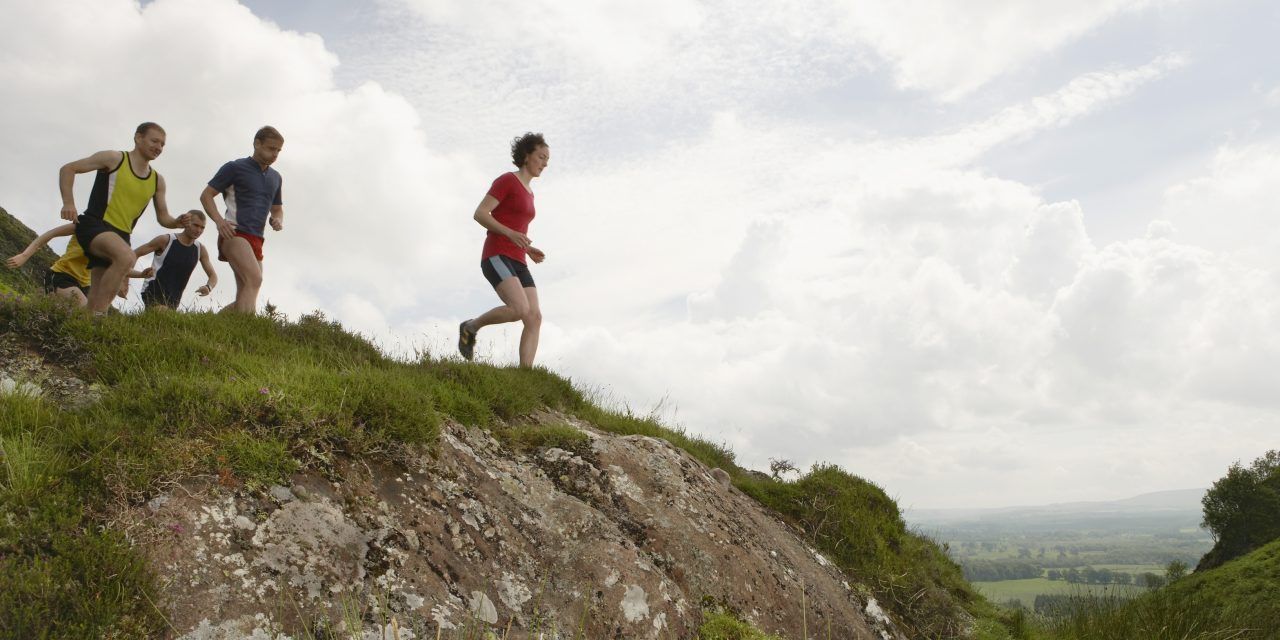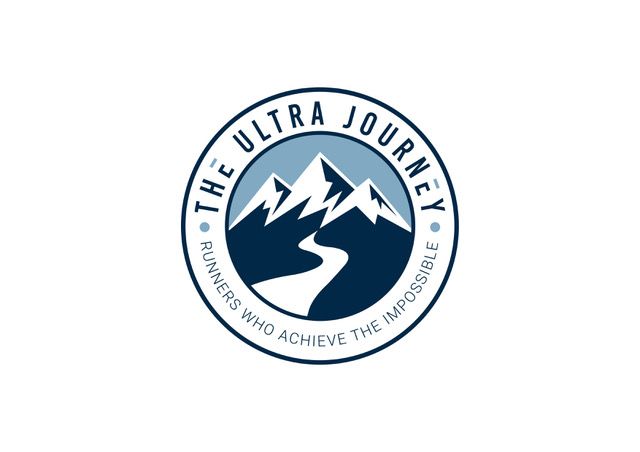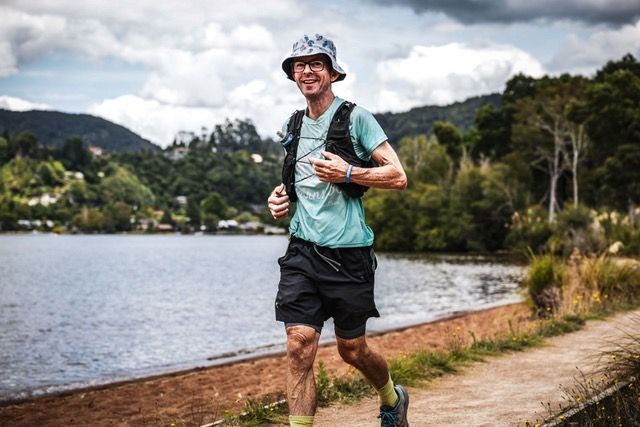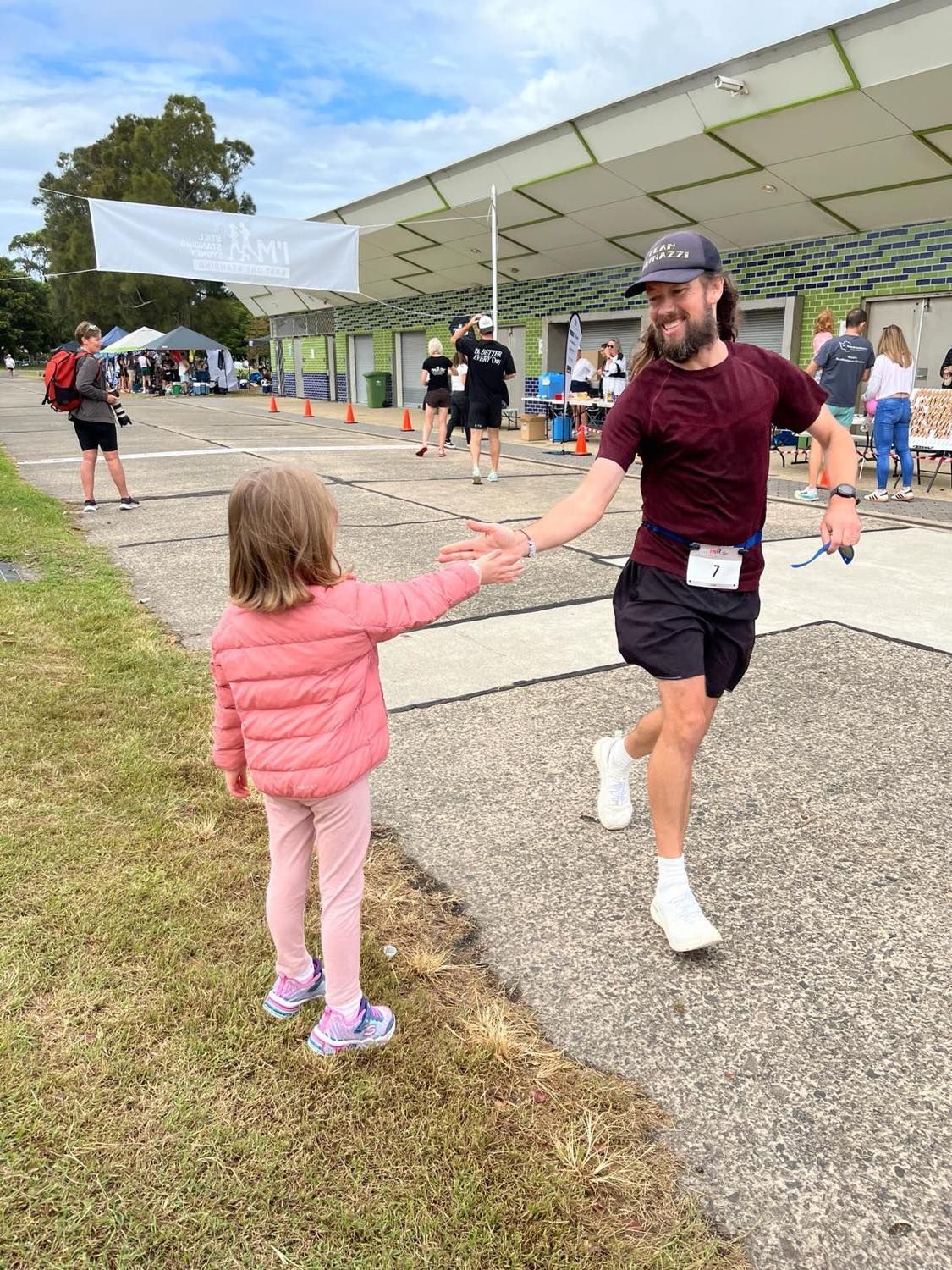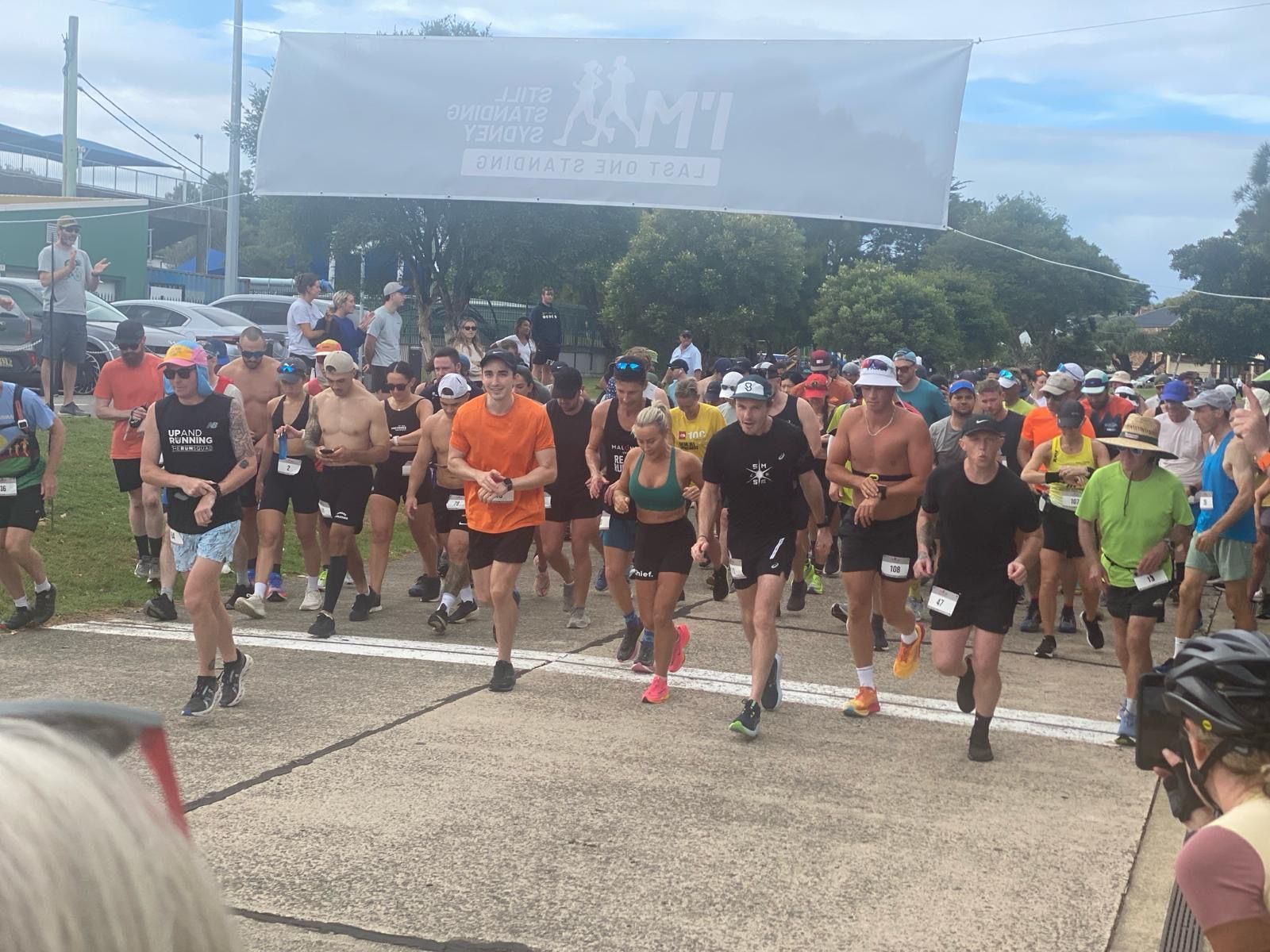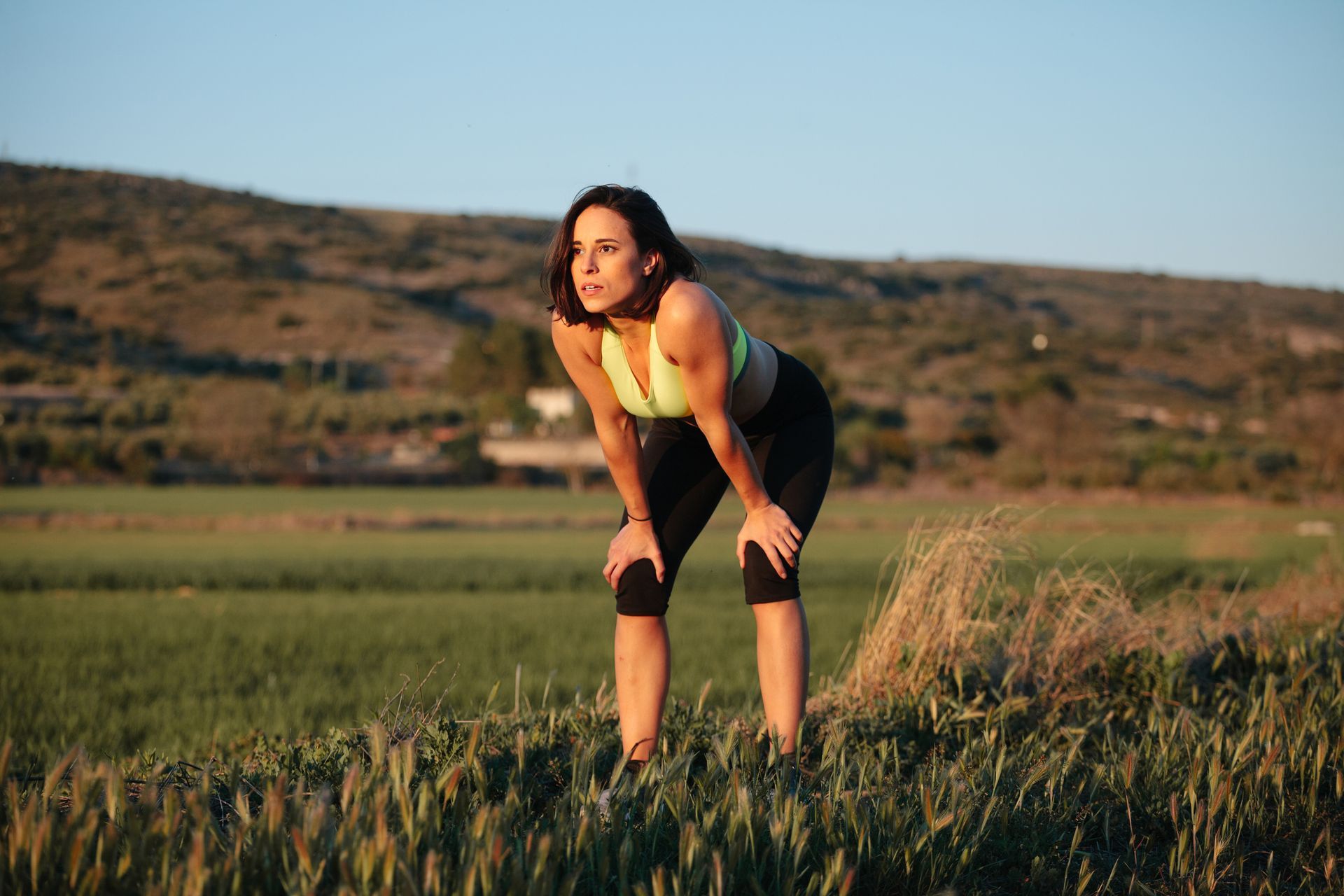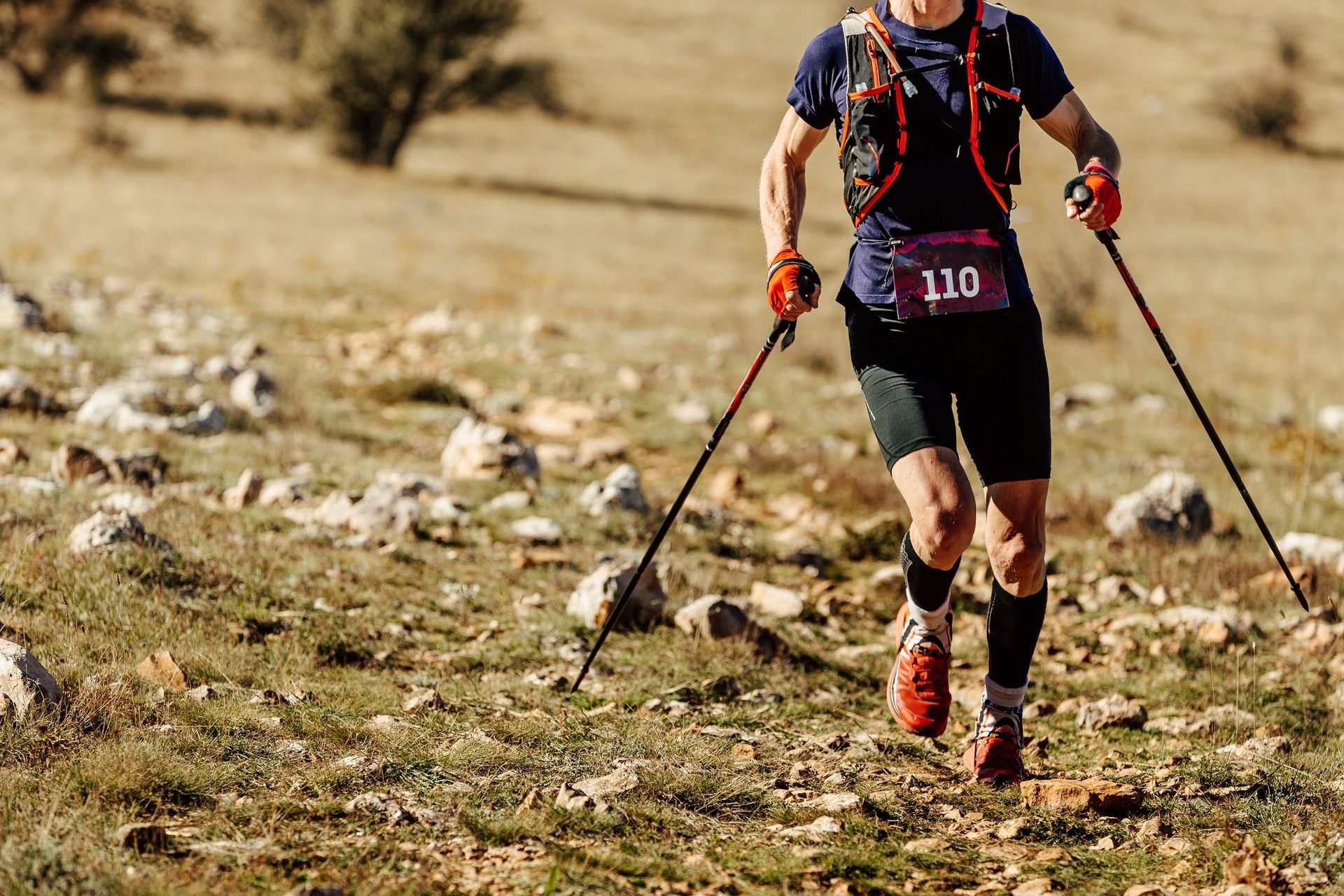As the saying goes, what goes up must come down. This is the fun bit. What is often not recognised, though, is the physiological effect that downhill running can have on your fatigue levels. The uphills work the energy systems; the downhills destroy the muscles, specifically your quads.
This is due to the eccentric loading that is placed through your muscles when downhill running.
An eccentric load is a load that causes your muscles to work without changing their length. The best way to illustrate this is to get you to stand with your back against a wall. From there, gradually walk your legs out till your thighs are at a 90° angle to the wall and you are in a sitting position. Your back should still be against the wall. You are now in a position without any external support (i.e. no chair).
In this position you will find that your muscles are working really hard to support you; however, they are not changing in length. If you don’t ‘feel’ it at first, just hold it for a little longer. This position forces your muscles to contend with large forces—the same type of force that they have to contend with when running downhill.
The key point is that you need to take care when running downhills. Start gradually and build into them over a few weeks.
So how do we run downhills?
Downhill running all has to do with your centre of gravity. If the hill is steep you will have to keep your centre of gravity behind your feet. You are working to control, or decelerate, your mass as you proceed down the hill.
This will cause you to go into somewhat of a ‘sitting’ position and bring your arms up and out to the sides to help balance yourself. With this type of downhill running you will decrease your stride length and take frequent small steps, thus allowing greater contact time with the ground that helps you keep yourself in control.
If the hill is only gradual and not technical, you will be able to maintain a more natural run technique. In this case your centre of gravity will be in front of your feet, thus allowing you to utilise gravity and accelerate down the hill.
This is a complete contrast to the above. In this situation you will increase your stride length, your arms will be in, and in some instances you may even need to increase your cadence. Be careful when doing this—you don’t want to end up out of control and taking a stack!
Although, as I always say, we will have a laugh and then check you’re okay, those are the rules.
Often you will find that downhills require a mix of the above two running techniques. As your running ability improves, you will find that you are able to simultaneously switch between the two techniques to allow you the quickest passage down a hill.
You’ll be able to decelerate and keep yourself in control when the hill is steep or technical, then shift your centre of gravity forward to allow you to accelerate down the hill when the gradient decreases or the trail becomes less technical.
The best bit: the only way to get better is to go and run the hills.
Sounds like it’s time for some fun!
Get in touch with Nick through
The Ultra Journey website to get personalised training plans and coaching, and take
The Ultra Runners Quiz to learn where your focus areas are.



